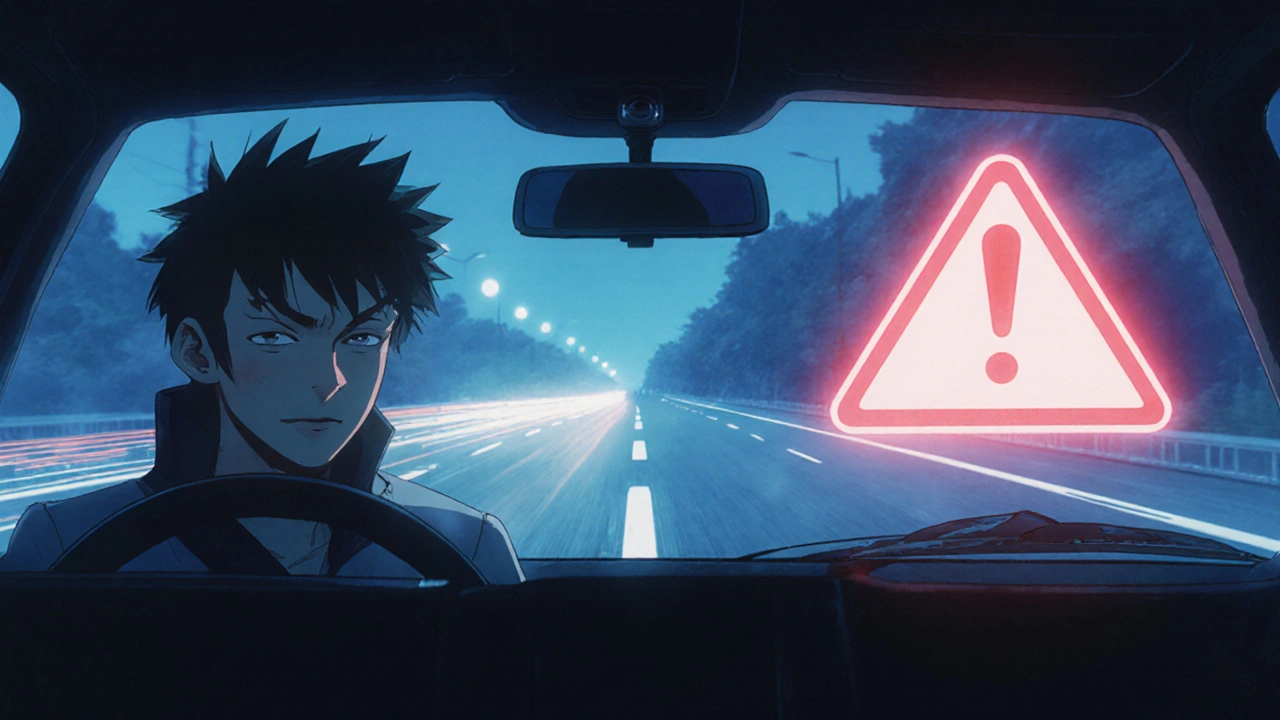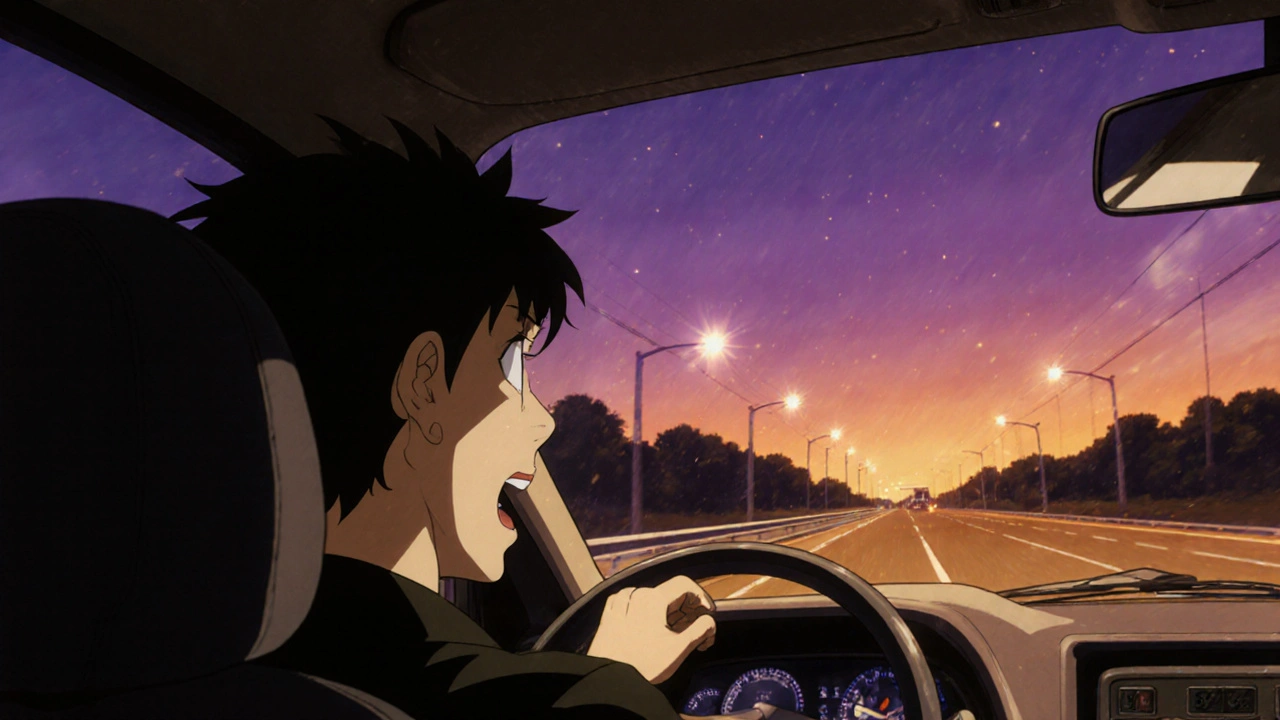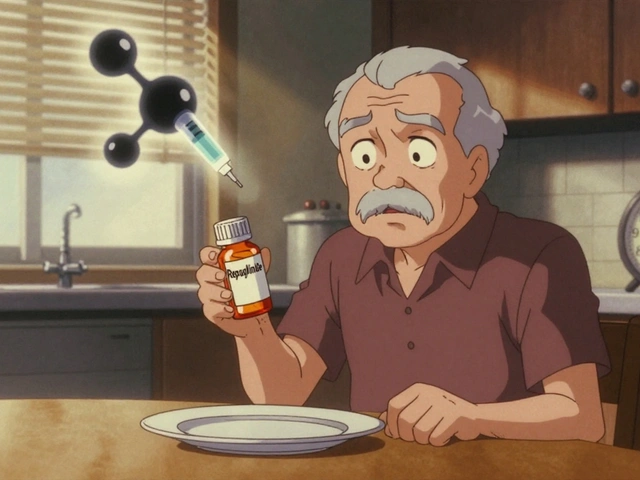Drowsy Driving Risk Calculator
Assess Your Alertness
Answer a few questions to determine your current drowsiness risk level
Your Risk Assessment
Results will appear here after calculation
Recommended Action
Safe driving is your top priority. Don't ignore these signals.
Ever felt that heavy‑eyed pull while cruising down the highway? That moment of yawning, the urge to close your eyes for just a second, can spell disaster when you’re behind the wheel. This guide breaks down why drowsy driving is so risky and gives you real‑world steps to keep yourself and others safe.
What is Drowsy Driving?
When a driver’s alertness drops below a safe level, Drowsy Driving is the act of operating a vehicle while fatigued or sleepy, which significantly raises crash risk becomes a serious hazard. Unlike alcohol impairment, drowsiness can creep in silently, making it harder to recognize until it’s too late.
Why Sleepiness Leads to Crashes
Research from the National Highway Traffic Safety Administration (NHTSA) shows that drowsy driving accounts for about 100,000 police‑reported crashes each year in the United States, resulting in roughly 1,550 deaths and 71,000 injuries. The core problem is that fatigue slows reaction time, narrows vision, and impairs decision‑making.
One of the most dangerous manifestations is Microsleep - a brief, involuntary episode of sleep that lasts a few seconds, often occurring without the driver realizing it. During a microsleep, a driver can travel the length of a football field without conscious control.
How to Spot Your Own Drowsiness
The human body gives clear signals when it’s time to pull over. Watch for these warning signs:
- Yawning repeatedly or feeling a heavy eyelid.
- Difficulty keeping your head up; you may drift off the road.
- Missing “exit” signs, traffic signals, or lane markings.
- Frequent blinking or eyes that feel dry.
- Feeling "zoned out" or having trouble remembering the last few minutes.
These symptoms often align with your body's Circadian Rhythm - the natural 24‑hour cycle that regulates sleepiness and alertness. Driving during the low‑alertness window (typically between 2 am‑6 am and 2 pm‑4 pm) raises the chance of a lapse.

Practical Strategies to Stay Awake and Safe
Once you recognize the danger, here are proven ways to protect yourself:
- Get Quality Rest Before You Drive: Aim for 7‑9 hours of sleep the night before a long trip. A short nap (20‑30 minutes) can boost alertness if you’re already on the road.
- Plan Frequent Breaks: Stop every two hours or every 100 miles, whichever comes first. Stretch, walk around, and sip water. Rest Stops are designed for exactly this purpose, providing safe places to recharge.
- Use Caffeine Wisely: A cup of coffee or tea can increase alertness for about an hour. Pair caffeine with a short break; relying on it alone won’t counter deep fatigue.
- Leverage Alertness Technologies: Many modern cars include lane‑departure warnings, driver‑monitoring cameras, and drowsiness alerts. Alertness Technologies can issue audible or vibrating warnings when they detect eye‑closure patterns or drifting lanes.
- Travel with a Companion: A passenger can engage you in conversation, share driving duties, or take over if you become too sleepy.
- Avoid Heavy Meals and Alcohol: Large meals and alcohol both increase post‑prandial sleepiness. If you’ve consumed alcohol, wait at least 24 hours before driving, as even low blood‑alcohol levels impair vigilance.
Legal and Policy Context
Many states treat drowsy driving as a form of reckless driving, especially when it leads to an accident. The National Highway Traffic Safety Administration (NHTSA) has launched the "Drive Awake" campaign, urging drivers to recognize fatigue signs and pull over.
Some jurisdictions are experimenting with mandatory driver‑fatigue education for new license holders and stricter enforcement of commercial‑driver hours‑of‑service regulations.

Quick Comparison: Drowsy Driving vs. Alcohol Impairment
| Aspect | Drowsy Driving | Alcohol Impairment |
|---|---|---|
| Primary Cause | Sleep deprivation, circadian dip, microsleep | Blood‑alcohol concentration (BAC) above legal limit |
| Typical Detection | Driving performance monitors, self‑assessment | Breathalyzer, field sobriety tests |
| Reaction Time | Slows by 20‑40 % after 18 hours awake | Slows by 30‑50 % at BAC 0.08 % |
| Legal Consequences | Often charged as reckless driving or DUI‑like offenses | Driving under influence (DUI) charges, license suspension |
| Prevention Tips | Rest, breaks, caffeine, alertness tech | Never drive after drinking, designated driver |
Safety Checklist for Every Driver
- ✔️ 7‑9 hours of sleep the night before a trip.
- ✔️ Schedule a 15‑minute break every 2 hours.
- ✔️ Keep water and a caffeinated beverage handy.
- ✔️ Activate any built‑in driver‑monitoring alerts.
- ✔️ Pull over at the first sign of yawning or drifting.
- ✔️ Avoid heavy meals and alcohol before driving.
Keep this list on your phone or a printed card. When you feel even a hint of fatigue, follow the steps and stay safe.
Frequently Asked Questions
How long can I safely drive without sleeping?
Most experts agree that after 16‑18 hours of wakefulness, your performance is similar to a BAC of 0.05 %. If you’re on the road past that point, take a 20‑minute nap or switch drivers.
Can I rely on coffee to stay awake?
Caffeine can boost alertness for about an hour, but it doesn’t replace real sleep. Use coffee together with a short stop to stretch and refresh.
What are the signs that I’m entering a microsleep?
You might notice your head bobbing, your eyes closing for a second, or a sudden “blank” in your memory of the last few seconds. If any of these happen, pull over immediately.
Do modern cars really detect drowsy driving?
Many newer models include driver‑monitoring cameras that track eye‑closure rate and lane position. When signs of fatigue appear, the system issues audible alerts or vibrates the steering wheel.
Is it illegal to drive while sleepy?
While there isn’t a specific “sleepy‑driving” law nationwide, most states treat severe fatigue as reckless driving or a form of DUI when it leads to an accident. Commercial drivers have stricter hour‑of‑service rules to prevent fatigue.







Penny Reeves
October 19, 2025 AT 12:38Honestly, the article regurgitates the same tired statistics that every traffic safety brochure has been shouting about for years. While the numbers are accurate, the piece fails to acknowledge the nuanced role of individual chronotypes in drowsy‑driving risk. Most drivers perceive their own fatigue as a minor inconvenience, yet the physiological data shows a 30‑40% degradation in reaction time after sixteen hours awake. Moreover, the suggested “20‑minute nap” is a palatable myth; research indicates that even short microsleeps can impair the brain's prefrontal cortex for up to ten minutes afterward. In short, if you want actionable guidance, you need more than a checklist-you need a personalized fatigue management plan.
Bobby Marie
November 9, 2025 AT 23:38Everyone should just pull over the first time they feel their eyes droop.
Christopher Burczyk
December 1, 2025 AT 11:38The exposition on circadian rhythms is commendably detailed, yet it neglects to reference the seminal work of Borbély (1982) on sleep regulation. A rigorous analysis would juxtapose these findings with contemporary field studies on driver alertness to substantiate the recommended break intervals. Additionally, the legal discussion would benefit from citing specific statutes that classify extreme fatigue as reckless driving. While the practical tips are sound, integrating peer‑reviewed literature would elevate the article's authority. Overall, the guide offers useful advice but falls short of academic completeness.